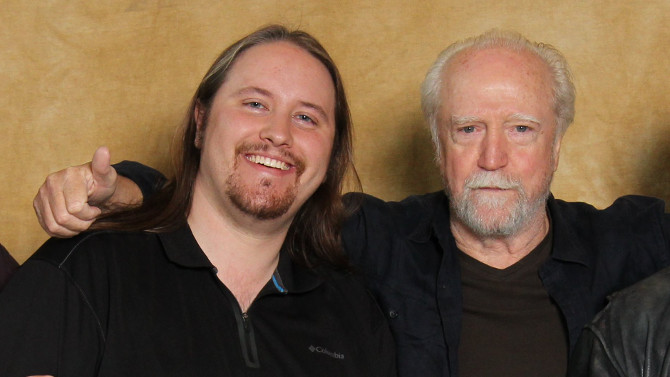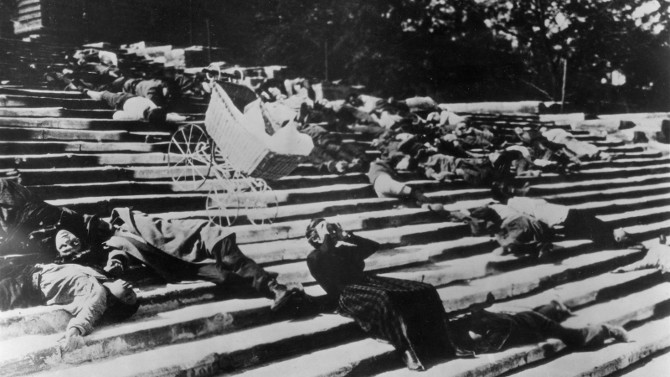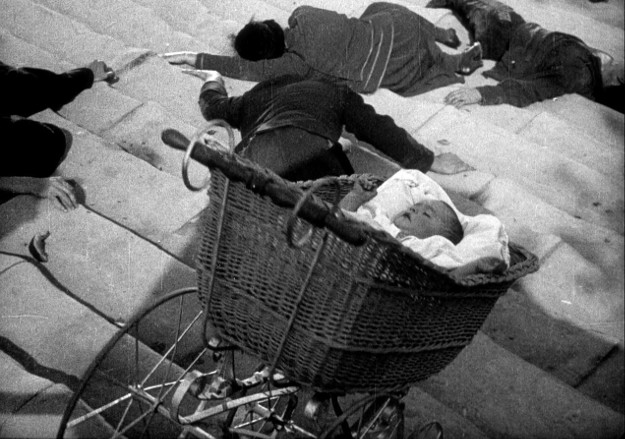A while back, I sat down with the great Scott Wilson. Perhaps known more recently as Hershel on The Walking Dead, he has been busy carving out an interesting career over the past five plus decades.
Starting off with roles in two classics, In the Heat of the Night and In Cold Blood, since, he has graced the silver screen in films such as 1974’s The Great Gatsby, The Ninth Configuration, Johnny Handsome, Young Guns II, The Exorcist III, Dead Man Walking, Shiloh (and its two sequels), G.I. Jane, Pearl Harbor, The Last Samurai, The Host, and a small but integral turn in this past year’s Hostiles, while recently, he has appeared on television series including CSI: Crime Scene Investigation, Bosch, and The OA. . . this much shortened filmography gives you a small idea of the impact he has made in the industry.
Talking movies, it did not take the actor long to select his top pick, citing the 1925 silent masterpiece Battleship Potemkin as his favourite. Speaking of its lasting impact, reaching influence and the connection he has to the film, he specifically referenced the iconic Odessa Steps sequence. . . a moment that stands out to him, not just on its own merits, but also because it influenced another scene he loves – the memorable staircase action found in Brian De Palma’s 80s classic The Untouchables.
Considered one of the most influential films of all-time, Battleship Potemkin’s director, Sergei M. Eisenstein made some unique decisions from the outset, developing a film devoid of a love story or star power. He cast many non-professionals in the feature, also utilizing a visually creative, documentary style approach to further construct an impactful motion picture.
Following the crew of the Battleship Potemkin, the based-on-true-events film took a reflective look back at June 1905 (a small portion of the first Russian Revolution, not to be confused with its 1917 counterpart – which led to the end of the Tsarist royalty). With the Revolution raging along on land, the mutinous thought has entered the minds of many of the men on the Potemkin, especially the very vocal Vakulinchuk (Aleksandr Antonov).
This is wholly understandable, as the crew is treated poorly: verbally abused, unfairly beaten and fed rotten meat (which the elitist doctor on board claims is fine). Also refusing to eat the borscht, their rebellious attitude is noted by The Commander and his Officers – those unwilling to eat meat have been charged with insubordination (they will be covered in a tarp and shot to death by a firing squad).
It is this heinous and wholly ludicrous declaration that finally awakens the men. Rising up, they throw the Officers overboard, taking control of the ship, but losing their fearless leader, Vakulinchuk, in the fight.
Returning to the port in Odessa, Vakulinchuk’s body is put on display, it stirring the hearts of the populace – the crew deemed heroes in the eyes of the local population. Though, this verbal dissonance is heard by the government, who send the police to deal with the working class rabblerousers.
This leads us to the most memorable sequence, the Odessa Steps the centrepiece of the raucous, violent action. At the heart of Odessa, it connects the main portion of the city to the waterfront, many gathering to cheer the men of the Potemkin and those locals sailing out to give the sailors food and other gifts to show their appreciation. Then, all of a sudden, the Cossacks arrive at the top of the steps, while government cavalry, wielding swords, attack those civilians fleeing the gunfire and bayonets from above. The Cossacks fire upon unarmed cripples, elderly women, mothers and children, and though they plead for an end to the violence, the assailants are unyielding, their movements and actions symbolic of an emotionless machine – no longer human beings. Surprisingly violent, the centrepiece is a baby in a carriage rolling uncontrollably down the stairs. . . it is well worth watching this back to back with the scene from De Palma’s The Untouchables, another legendary moment, better understood thanks to seeing its roots. It is by no means the only film it has influenced, a comedic version is found in Naked Gun 331/3: The Final Insult, while Alfred Hitchcock’s Foreign Correspondent, Francis Ford Coppola’s The Godfather, Terry Gilliam’s Brazil, two Woody Allen films, Bananas and Love and Death, and even Laurel and Hardy’s 1933 short The Music Box, pays comedic tribute. The ripple effect is ever obvious, whether an homage, a spoof, or a spoof of an homage, its influence is impressively evident in so many features.
Intriguingly, the Odessa Steps scene did not actually occur (it was loosely based upon the Bloody Sunday massacre which happened in St. Petersburg – five months before this film takes place), its cinematic influence often confusing people into believing it is an actual event in the annals of history (in fact, it wasn’t even in the original script, a worthy late addition devised during production that changed the movie forever).
With an impressive scope and scale (filmed on an actual battleship, thousands of extras were used), the grand depiction of battleship and people does not limit Eisenstein’s deft touch. It is the small, subtle moments that are as memorable as the epic set pieces. The uprising on the Potemkin is best summed up by the doctor who once gave his blessing to the maggot filled meat, who now lies dead in the water, only his glasses visible, ironically hanging from the same tainted meat. Likewise, the Odessa violence is at its best when the shadows of the Cossacks loom over the wounded and dead – the army soon marching on and over them, as if a tank trampling the terrain underfoot. Lastly, the flag raised Communist red by the Potemkin mutineers is a powerful standout in a black and white film (the celluloid was coloured red by hand).
Feared by governments that it would spread Communism and negatively persuade the working class, Battleship Potemkin was banned by most into the 1950s (i.e. the United Kingdom, only allowing the film to be shown in 1954). Yet, despite this, it has been seen by many, the favourite film of both Charlie Chaplin and Billy Wilder, while Orson Welles, Paul Greengrass and Michael Mann place it on their list of top motion pictures. Its montage editing techniques must also be mentioned, as they are still highly influential to this day. Another nice touch finds it having an original score written for it back in 1926, by Edmund Meisel (and under the guidance of Eisenstein), for the Berlin premiere. So, check out one of the most powerful propaganda films of all-time, it will have you cheering its praises.




